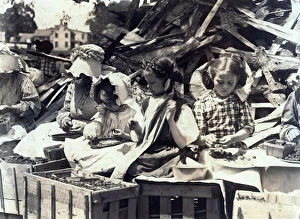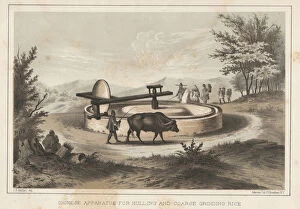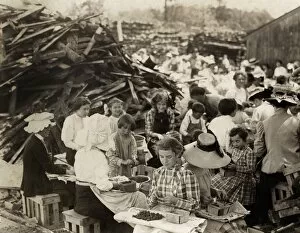Hulling Collection
Hulling: A Timeless Agricultural Process Through the Lens of History From the strawberry fields of California in the early 1900s
All Professionally Made to Order for Quick Shipping
Hulling: A Timeless Agricultural Process Through the Lens of History From the strawberry fields of California in the early 1900s, where children as young as five worked tirelessly to hull berries for two cents a day, to the rice paddies of Vietnam and the Chinese apparatus for hulling and coarse grinding rice in the mid-1800s, the process has been an integral part of agriculture for centuries. In the 1910s, during the height of the migrant labor era in the United States, families worked together to hull strawberries, a labor-intensive task that required dexterity and precision. The image of a mother and her children hulling berries is a poignant reminder of the harsh realities of farm labor during this period. The process strawberries involves removing the green caps or hulls from the fruit, leaving only the red, edible part behind. This was traditionally done with a knife, as depicted in an early 1900s photograph. In contrast, the Chinese apparatus for hulling and coarse grinding rice, created in 1855, was a more sophisticated solution to the labor-intensive process of rice production. This color lithograph shows the intricate machinery in action. Fast forward to modern times, and the process rice has become more mechanized, but the importance of this agricultural process remains the same. In places like Hanoi, Vietnam, rice husking continues to be a communal activity, bringing families and communities together. Despite the advancements in technology, the image of a woman hulling strawberries in the 1930s, as captured by Madame Yevonde, remains a powerful symbol of the human connection to the land and the enduring nature of agricultural labor.








